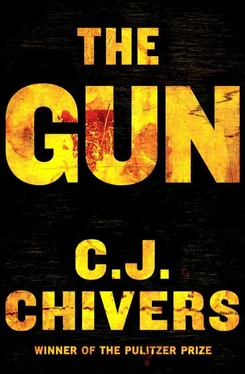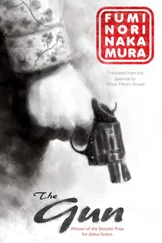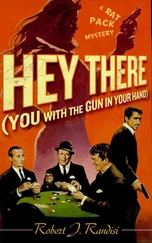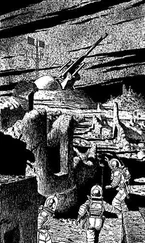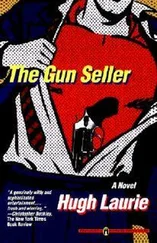The new name brought the rifle into line with the military’s standard designations. M stood for model; thus the M1903 Springfield, the M1 Garand, the M-14, etc.
A lock was installed on most M-14s to prevent them from being used on automatic fire. In every ten-man rifle squad in the army in the early 1960s, two men were given the M-14 capable of automatic fire, known as the M-14E2; this version was equipped with a bipod and other features that drove up its weight.
Under the license sale arrangement, MacDonald would receive a cut of both Fairchild’s and Colt’s future receipts. This included a 1 percent commission from Colt’s for the selling price of every rifle sold, and 10 percent of Fairchild royalties, some of which were calculated on a sliding scale. For sales to military customers, the combined formula guaranteed him 1.225 percent. These were considerable incentives for MacDonald to try to have the AR-15 adopted by the American military. (For a detailed review of the license deal, see ‘How a Lone Inventor’s Idea Took Fire,’ Business Week, July 6, 1968.)
The embarrassment had grounds beyond the origins of the cadavers used. The twenty-seven severed heads were ultimately subjected to tests of little apparent value. And there are hints in the report of a lapse of scientific judgment that cast doubts on the value of the entire study. According to the report, Dziemian and Olivier used AR-15 ammunition different from the ammunition the American military used in Vietnam. Throughout the war, American troops would use a metal-jacketed round, just as the military had been using in other cartridges throughout the century. But in the Biophysics Division’s test in 1962, the cartridges were described by Dziemian and Olivier as propelling ‘bullets with a lead core and no metal jackets.’ These rounds could be expected to create wounds of a much different nature from those made by military ammunition, and their use in the tests risked undermining judgment about the relative lethality of the tested weapons. But there is a hurdle to knowing with certainty what really occurred: the secrecy and cover-up of the work. Was the reference a clerical error? The photographs of the ammunition released to the author by the United States government were low-quality digital scans and provided no help in determining the bullets’ composition. Ultimately, it is not possible to tell from the records released to date. The study’s final report did have other clerical errors, so it remains possible that this, too, was a clerical error. This was one of the pitfalls of secret tests, which were subject neither to peer review nor to public scrutiny. Both research lapses and editorial lapses could pass, and did pass, unchallenged.
Army of the Republic of Vietnam, which fought with American forces against the North Vietnamese troops and Viet Cong guerrillas ( author’s note ).
The old cleaning gear was of little use. The M-14 had a bore diameter of 7.62 millimeters; the M-16 had a diameter of 5.56 millimeters. The cleaning rod used to push a patch through an M-14 barrel was too thick to pass through the newer rifle’s barrel.
What really caused the jamming? Ichord emphasized ball powder, a factor that a subsequent writer, James Fallows, endorsed. Thomas L. McNaugher, in his rigorous 1984 study, The M16 Controversies: Military Organizations and Weapons Acquisition , emphasized maintenance and noted that by 1970 the rifle was widely considered reliable. The most likely cause for most of the reported problems, based on the records now available, and the accounts of veterans, would seem to be corrosion in the rifles’ chambers. This was caused in some cases by cleaning habits in the wet climate of Vietnam, but from a manufacturing perspective was related more strongly to the failure of the army and Colt’s to chrome-plate the chambers of all M-16s leaving Hartford until late in 1968. Another likely factor contributing to the failures to extract, though as far as is publicly known the army never conducted extensive tests of the cartridge cases from 1966 to 1968, was that the ammunition cases were too soft and expanded under the pressures of firing, lodging into pitting and tool marks in the chamber. The rifle’s inherently poor resistance to corrosion and insufficient ammunition standards likely combined to create the most intractable jams. Rifle cleaning habits were in all likelihood much less of a factor, considering that the same troops, when using M-14s in the same environments, reported few reliability problems. By 1970, when McNaugher noted that the M-16s in Vietnam were performing reliably, the many manufacturing changes meant that in many ways the troops were carrying a different rifle than what had been issued in 1966 and 1967.
The United States Army in the Republic of Vietnam would not require soldiers to report M-16 malfunctions officially until spring 1968, making the military’s data throughout the worst period of M-16 malfunctions, in 1966 and 1967, of dubious value.
In May 1972, three members of the Japanese Red Army, a left-wing terrorist group, opened fire with Czech assault rifles on the crowd inside the terminal of Israel’s international airport. They shot more than one hundred people, and killed twenty-four. They had smuggled their rifles in violin cases on a flight from France.
In one famous image, the cover of Life magazine displayed a young Israeli soldier, soaked and grinning, as he frolicked in the Suez Canal with a captured Kalashnikov.
This rifle was slightly longer than the AKM, but almost exactly the same weight, and the bullets it fired traveled at a higher velocity (more than twenty-nine hundred feet per second, as opposed to less than twenty-four hundred with the AKM).
Its place was so complete that at times it was absurdly overstated. By one rumor, macaroni in Soviet pasta plants was required to be manufactured to a thickness of 7.62 millimeters; this, the story went, was because the machinery that produced pasta was ready, under secret decree, to be convertible to manufacturing cartridges. Nonsense, but a sign. Soviet priorities were such that a joke like this had currency.
The remainder included 6 heavy machine guns, 54 general-purpose machine guns or squad automatic weapons, 182 carbines, 123 submachine guns, and a mix of grenade launchers and surface-to-air missiles.
The FAL originated in Belgium, but over the years was manufactured in several nations, including the United Kingdom, Australia, Argentina, and India.
This for an army that by 2007 would report having fewer than seventy-five thousand soldiers and rarely had any soldiers abroad, aside from small contingents working under the auspices of other organizations—such as the multinational force in Iraq or peacekeeping force in Kosovo—that provided much of their logistics.
These two lines— it takes only a week and the boy soldiers were not good shots —serve as a departure point for further discussion about one element of Kalashnikov proliferation. The Kalashnikov is a very effective firearm at short and medium ranges. But its ease of use should not be confused with a user’s ability to master marksmanship. Most anyone can load, carry, and fire a Kalashnikov, and so most anyone does. And often the poorly disciplined or the poorly trained use them ineffectively in fights. Any extensive reconstruction of the ways that warfighting has changed since handheld automatic firearms became prevalent in conflict zones will invariably turn up accounts of gunmen who fire wild bursts and hit nothing at all, even at close range. Such observations align with a school of thought that says that since assault rifles displaced bolt-action rifles, marksmanship skills in many fighting forces have declined. Why? Because of a reliance on automatic shooting, often without aiming. This behavior, combined with the trajectory of the medium-powered M1943 cartridge, limits the effective range of the weapon as commonly used. In the hands of unskilled gunmen, Kalashnikovs are effective for crime and for action against the unarmed, and for destabilizing regions not under tight government control. (The villagers in Acholiland are almost defenseless against them, and have suffered terribly.) But in the years since most well-off conventional armies developed or procured their own assault rifles, and often mounted optical sights to their updated arms, Kalashnikovs in such hands have proven at times to be less effective in fighting conventional forces with sophisticated training and modern equipment.
Читать дальше
